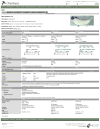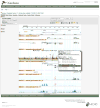Xenbase: Core features, data acquisition, and data processing
- PMID: 26150211
- PMCID: PMC4545734
- DOI: 10.1002/dvg.22873
Xenbase: Core features, data acquisition, and data processing
Abstract
Xenbase, the Xenopus model organism database (www.xenbase.org), is a cloud-based, web-accessible resource that integrates the diverse genomic and biological data from Xenopus research. Xenopus frogs are one of the major vertebrate animal models used for biomedical research, and Xenbase is the central repository for the enormous amount of data generated using this model tetrapod. The goal of Xenbase is to accelerate discovery by enabling investigators to make novel connections between molecular pathways in Xenopus and human disease. Our relational database and user-friendly interface make these data easy to query and allows investigators to quickly interrogate and link different data types in ways that would otherwise be difficult, time consuming, or impossible. Xenbase also enhances the value of these data through high-quality gene expression curation and data integration, by providing bioinformatics tools optimized for Xenopus experiments, and by linking Xenopus data to other model organisms and to human data. Xenbase draws in data via pipelines that download data, parse the content, and save them into appropriate files and database tables. Furthermore, Xenbase makes these data accessible to the broader biomedical community by continually providing annotated data updates to organizations such as NCBI, UniProtKB, and Ensembl. Here, we describe our bioinformatics, genome-browsing tools, data acquisition and sharing, our community submitted and literature curation pipelines, text-mining support, gene page features, and the curation of gene nomenclature and gene models.
Keywords: Xenopus; biocuration; gene expression; genomics; human disease modeling; model organism database; phenotypes.
© 2015 Wiley Periodicals, Inc.
Figures





References
-
- Bell GW, Yatskievych TA, Antin PB. GEISHA, a whole-mount in situ hybridization gene expression screen in chicken embryos. Dev Dyn. 2004;229:677–687. - PubMed
Publication types
MeSH terms
Grants and funding
LinkOut - more resources
Full Text Sources
Other Literature Sources
Miscellaneous

